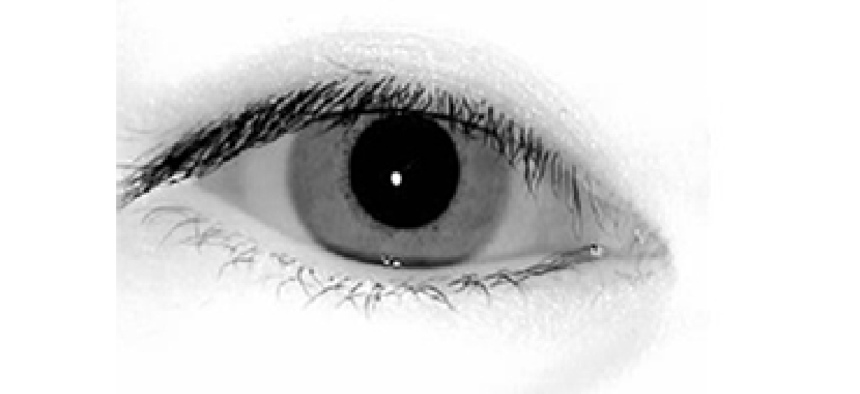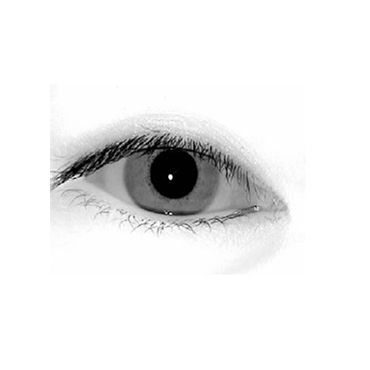NIST delivers long-sought standards for iris recognition

New guidelines for identity verification also cover on-card fingerprint recognition.

An iris image that meets NIST's biometric standard. Click here for a complete explanation. (NIST image)
THE national Institute of Science and Technology's release of long-awaited recommendations for an iris imaging option for Federal Personal Identity Verification (PIV) cards also comes with an on-card fingerprint comparison option.
In the latest update of Federal Information Processing Standards Publication Series (FIPS-201), NIST issued its official Biometric Data Specifications for Personal Identity Verification (Special Publication 800-76-2) late on July 12.
Government-issued PIV smart cards are used by federal employees and contractors to access government facilities and computer networks. The PIV card carries a photo, fingerprint information, personal identification number and a cryptographic credential -- computer-generated random data that are recognized only by the PIV card -- all of which serve to bind the card to the card holder.
NIST had been working to develop modifications like iris recognition and on-card fingerprint comparison for some time, and has faced withering congressional criticism for lagging in releasing its iris imaging recommendations.
In a June 19 House oversight hearing, Charles Romine, the director of NIST's information technology lab, was grilled about the iris recognition recommendations. "When, when, when, will we get a standard for iris recognition?" subcommittee chairman John Mica (R-Fla.) asked Romine loudly.
"Is there any sense of urgency here?" asked Rep. Gerry Connolly (D-Va.), the subcommittee's ranking minority member. Both men said Romine's predecessor, Cita Furlani, had promised the document, but then retired from NIST.
Romine promised the committee in June he would have recommendations out in July.
Connolly acknowledged the release of the specifications as a positive step.
"Recent Government Operations Subcommittee oversight hearings demonstrated that a significant amount of work remains to be done to meet the original goal of Homeland Security Presidential Directive-12," he said. "The biometric data specifications issued by NIST represent a long-awaited update that will enable the federal government to fully implement HSPD-12, and finally establish a common identification standard for federal employees and contractors."
The iris recognition recommendation explains the way compact images of one or both irises can be loaded on the PIV card for more efficient and rapid reading. It also provides performance specifications for iris biometrics to assure high accuracy, and provides specifications for iris cameras to guide implementers on camera selection. The standards-based elements support interoperability within and across agencies using iris recognition technology, said NIST.
Agencies can choose to add iris images as an alternate biometric over fingerprints, because, for some users, fingerprint collection can be difficult. At times, according to NIST, the fingerprints are too dry to yield a good image, and lotions, wounds or illness also can make for poor images. Agencies now have the option of using two biometric sources to avoid such circumstances.
According to NIST, the document's on-card comparison of fingerprint specifications describe how to put one or two compact fingerprint templates and a recognition algorithm on cards. When a user wants to sign a document digitally or open a secure file, they can place their finger on a reader attached to the keyboard to verify their identity. Currently, employees have to type in a PIN for matching, which is subject to error and misuse.
Several recent NIST research projects have led to improved technologies for identity management that are included in the updated specification.
NIST biometric testing project leader Patrick Grother told FCW that the release will help agencies implementing PIV by providing clarity for iris and facial recognition issues. For instance, after applying standard compression algorithms to a large number of iris images and then using these compact images with state-of-the-art recognition algorithms, researchers determined that an iris image compressed to just 3KB provides enough detail to accurately recognize an individual's iris.
"This collaboration with industry and the standards community led to the ISO/IEC 19794-6 iris standard published in late 2011. The iris standard can support PIV authentication and other uses, such as e-passports," Grother said. "More importantly, the iris standard ensures that the iris data is interoperable, that is, it can be exchanged easily between cameras and readers from different makers and across the world." In another study announced with the recommendations, NIST scientists also evaluated how quickly irises age.
Romine said in his June subcommittee testimony that how human irises age had been an obstacle to issuing the iris-imaging recommendations, but the agency had recently completed research on the issue.
In its July 12 statement, NIST said its researchers studied two data sets with hundreds of thousands of iris images collected from frequent travelers in airports. They found no significant deterioration in recognition over nearly a decade, it said. The result, it said, provides guidance for how often agencies might need to renew their image database, suggesting that irises would meet the PIV requirement that biometric data should be viable over a 12-year period.
NIST said it is also collaborating with the Department of Homeland Security on a camera certification process to define a repeatable optical laboratory test of a camera's peak imaging capability.
The agency said the new guidelines do not recommend using templates for iris recognition because they "are proprietary non-standardized mathematical encodings of information" extracted from images. "Templates are not interoperable," meaning not compatible with every reader.


